Mimic
Agenda
Mainstage Programming
Nextgov/FCW Breakout Track
Defense One Breakout Track
Washington Technology Breakout Track
Mainstage Programming
Times are subject to change.

Anna Pettyjohn
EVP, Product & StrategyGovExec

Anna Pettyjohn
EVP, Product & StrategyGovExec
With zero trust at the forefront of modern security strategies, Zero Trust Architecture (ZTA) is transforming cybersecurity in government. To enhance identity verification, mitigate risks, and counter advanced persistent threats (APTs), government agencies must embrace ZTA to bolster their security posture. AI and other emerging technologies are critical enablers, empowering agencies with enhanced data governance and threat detection capabilities.
In this discussion, leaders will highlight how government agencies are advancing their zero trust architectures and fortifying their cybersecurity frameworks to stay ahead of evolving threats. The panel will explore how emerging technologies and advanced threat detection are reshaping zero trust strategies, ensuring privacy, and building resilience in an ever-changing landscape.
With zero trust at the forefront of modern security strategies, Zero Trust Architecture (ZTA) is transforming cybersecurity in government. To enhance identity verification, mitigate risks, and counter advanced persistent threats (APTs), government agencies must embrace ZTA to bolster their security posture. AI and other emerging technologies are critical enablers, empowering agencies with enhanced data governance and threat detection capabilities.
In this discussion, leaders will highlight how government agencies are advancing their zero trust architectures and fortifying their cybersecurity frameworks to stay ahead of evolving threats. The panel will explore how emerging technologies and advanced threat detection are reshaping zero trust strategies, ensuring privacy, and building resilience in an ever-changing landscape.

Cherilyn Pascoe
Director, National Cybersecurity Center Of Excellence (NCCOE)NIST

Heather Kuldell-Ware
Former Editor-in-ChiefGovExec
With zero trust at the forefront of modern security strategies, Zero Trust Architecture (ZTA) is transforming cybersecurity in government. To enhance identity verification, mitigate risks, and counter advanced persistent threats (APTs), government agencies must embrace ZTA to bolster their security posture. AI and other emerging technologies are critical enablers, empowering agencies with enhanced data governance and threat detection capabilities.
In this discussion, leaders will highlight how government agencies are advancing their zero trust architectures and fortifying their cybersecurity frameworks to stay ahead of evolving threats. The panel will explore how emerging technologies and advanced threat detection are reshaping zero trust strategies, ensuring privacy, and building resilience in an ever-changing landscape.

Cherilyn Pascoe
Director, National Cybersecurity Center Of Excellence (NCCOE)NIST

Heather Kuldell-Ware
Former Editor-in-ChiefGovExec
Underwriter
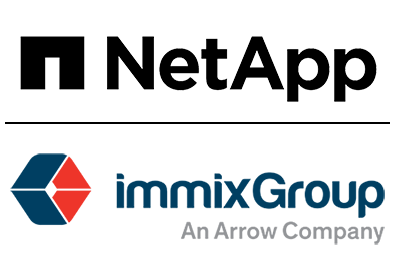
The cybersecurity landscape is more complex than ever, and government agencies face unprecedented challenges in protecting mission-critical infrastructure and sensitive data. In this session, an industry expert explores the evolution of cybersecurity in the public sector, highlighting the strategic importance of collaboration in strengthening cyber defenses. He'll delve into balancing agility and innovation with security, discuss the impact of AI in managing and securing data, and consider how partnerships can drive resilient cybersecurity solutions. Join us for an in-depth conversation about equipping federal organizations with the tools and strategies needed to stay ahead in an ever-evolving cyber landscape.
The cybersecurity landscape is more complex than ever, and government agencies face unprecedented challenges in protecting mission-critical infrastructure and sensitive data. In this session, an industry expert explores the evolution of cybersecurity in the public sector, highlighting the strategic importance of collaboration in strengthening cyber defenses. He'll delve into balancing agility and innovation with security, discuss the impact of AI in managing and securing data, and consider how partnerships can drive resilient cybersecurity solutions. Join us for an in-depth conversation about equipping federal organizations with the tools and strategies needed to stay ahead in an ever-evolving cyber landscape.

Jim Cosby
CTO, Public Sector and PartnersNetApp US Public Sector, Inc.

George Jackson
Executive ProducerGovExec
The cybersecurity landscape is more complex than ever, and government agencies face unprecedented challenges in protecting mission-critical infrastructure and sensitive data. In this session, an industry expert explores the evolution of cybersecurity in the public sector, highlighting the strategic importance of collaboration in strengthening cyber defenses. He'll delve into balancing agility and innovation with security, discuss the impact of AI in managing and securing data, and consider how partnerships can drive resilient cybersecurity solutions. Join us for an in-depth conversation about equipping federal organizations with the tools and strategies needed to stay ahead in an ever-evolving cyber landscape.

Jim Cosby
CTO, Public Sector and PartnersNetApp US Public Sector, Inc.

George Jackson
Executive ProducerGovExec

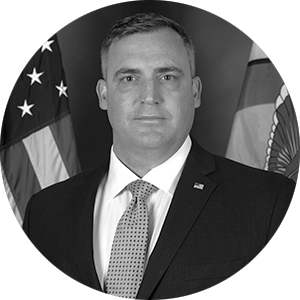
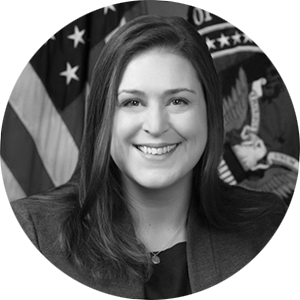
AI-powered systems enable real-time data analysis, proactive threat detection, and adaptive responses that far outpace traditional methods. By leveraging these technologies, organizations can forecast potential threats using historical data and behavioral analytics. However, adoption comes with challenges—ensuring strong data governance, maintaining privacy, and upskilling the cyber workforce are critical to fully unlocking AI and ML’s potential. Successfully integrating these technologies requires balancing technical innovation with human expertise to strengthen cybersecurity defenses against evolving threats. With so much happening, where should you prioritize your attention?
In this panel, experts will share their cyber defense journeys, best practices, and how their organizations have leveraged emerging technologies to strengthen their security posture. They will also discuss the hurdles they’ve faced, from data governance issues to workforce training, and how they've overcome them to drive success in today’s complex threat landscape.
AI-powered systems enable real-time data analysis, proactive threat detection, and adaptive responses that far outpace traditional methods. By leveraging these technologies, organizations can forecast potential threats using historical data and behavioral analytics. However, adoption comes with challenges—ensuring strong data governance, maintaining privacy, and upskilling the cyber workforce are critical to fully unlocking AI and ML’s potential. Successfully integrating these technologies requires balancing technical innovation with human expertise to strengthen cybersecurity defenses against evolving threats. With so much happening, where should you prioritize your attention?
In this panel, experts will share their cyber defense journeys, best practices, and how their organizations have leveraged emerging technologies to strengthen their security posture. They will also discuss the hurdles they’ve faced, from data governance issues to workforce training, and how they've overcome them to drive success in today’s complex threat landscape.

Dr. Michael Foster
Chief Data OfficerU.S. Central Command

Lauren Goldman
Director of Analytic Integration, Cyber Threat Intelligence Integration CenterOffice of the Director of National Intelligence
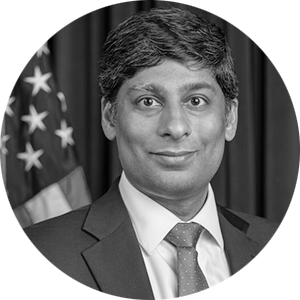
Rajeev Raghavan
Special Counsel to FBI Director Christopher WrayFBI

Amber Corrin
Former EditorFederal Times & C4ISRNET
AI-powered systems enable real-time data analysis, proactive threat detection, and adaptive responses that far outpace traditional methods. By leveraging these technologies, organizations can forecast potential threats using historical data and behavioral analytics. However, adoption comes with challenges—ensuring strong data governance, maintaining privacy, and upskilling the cyber workforce are critical to fully unlocking AI and ML’s potential. Successfully integrating these technologies requires balancing technical innovation with human expertise to strengthen cybersecurity defenses against evolving threats. With so much happening, where should you prioritize your attention?
In this panel, experts will share their cyber defense journeys, best practices, and how their organizations have leveraged emerging technologies to strengthen their security posture. They will also discuss the hurdles they’ve faced, from data governance issues to workforce training, and how they've overcome them to drive success in today’s complex threat landscape.

Dr. Michael Foster
Chief Data OfficerU.S. Central Command

Lauren Goldman
Director of Analytic Integration, Cyber Threat Intelligence Integration CenterOffice of the Director of National Intelligence

Rajeev Raghavan
Special Counsel to FBI Director Christopher WrayFBI

Amber Corrin
Former EditorFederal Times & C4ISRNET
Government organizations handle sensitive information, making them prime targets for cyberattacks, including those leveraging AI. A modern Security Operations approach, incorporating AI-driven tools and threat intelligence, allows government agencies to proactively detect, respond to, and even anticipate threats, ensuring the security of critical data and national infrastructure.
Key Takeaways:
- Reimagine security operations: Enable seamless collaboration and proactive threat hunting across multiple agencies.
- Gain a decisive advantage with threat intelligence: Uncover threats before they impact your systems with real-time, actionable insights, automatically applied to your unique environment.
- Empower your team with AI-driven expertise: From reducing repetitive tasks to pairing novices with expert guidance, witness how AI can elevate your cybersecurity capabilities.
Government organizations handle sensitive information, making them prime targets for cyberattacks, including those leveraging AI. A modern Security Operations approach, incorporating AI-driven tools and threat intelligence, allows government agencies to proactively detect, respond to, and even anticipate threats, ensuring the security of critical data and national infrastructure.
Key Takeaways:
- Reimagine security operations: Enable seamless collaboration and proactive threat hunting across multiple agencies.
- Gain a decisive advantage with threat intelligence: Uncover threats before they impact your systems with real-time, actionable insights, automatically applied to your unique environment.
- Empower your team with AI-driven expertise: From reducing repetitive tasks to pairing novices with expert guidance, witness how AI can elevate your cybersecurity capabilities.

Nick Panos
Senior Cybersecurity Advisor, Google Cloud Office of the CISOGoogle Cloud Security
Government organizations handle sensitive information, making them prime targets for cyberattacks, including those leveraging AI. A modern Security Operations approach, incorporating AI-driven tools and threat intelligence, allows government agencies to proactively detect, respond to, and even anticipate threats, ensuring the security of critical data and national infrastructure.
Key Takeaways:
- Reimagine security operations: Enable seamless collaboration and proactive threat hunting across multiple agencies.
- Gain a decisive advantage with threat intelligence: Uncover threats before they impact your systems with real-time, actionable insights, automatically applied to your unique environment.
- Empower your team with AI-driven expertise: From reducing repetitive tasks to pairing novices with expert guidance, witness how AI can elevate your cybersecurity capabilities.

Nick Panos
Senior Cybersecurity Advisor, Google Cloud Office of the CISOGoogle Cloud Security
Grab a cup of coffee and network with your peers at the GovExec Cybersecurity Futures Forum
Grab a cup of coffee and network with your peers at the GovExec Cybersecurity Futures Forum
Grab a cup of coffee and network with your peers at the GovExec Cybersecurity Futures Forum
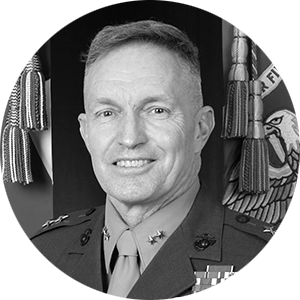
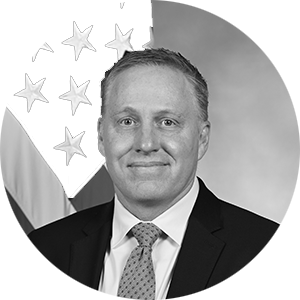
Defending against sophisticated attacks from hackers utilizing generative AI and other advanced technologies requires a highly capable workforce. Developing this workforce starts with comprehensive education and training programs that provide professionals with a deep understanding of the latest cybersecurity principles, technologies, and best practices. To address the growing skills gap, partnerships and collaborations between government agencies, private sector stakeholders, and educational institutions are essential. These collaborative efforts help to create pathways for talent development, ensuring a continuous supply of skilled individuals ready to tackle emerging threats.
In this discussion, experts will share how their organizations are advancing towards building a more diverse, skilled, and innovative cyber workforce. They will share strategies for targeted recruitment, ongoing training initiatives, and collaborative efforts that contribute to a stronger cybersecurity community capable of meeting the challenges of an evolving threat landscape.
Defending against sophisticated attacks from hackers utilizing generative AI and other advanced technologies requires a highly capable workforce. Developing this workforce starts with comprehensive education and training programs that provide professionals with a deep understanding of the latest cybersecurity principles, technologies, and best practices. To address the growing skills gap, partnerships and collaborations between government agencies, private sector stakeholders, and educational institutions are essential. These collaborative efforts help to create pathways for talent development, ensuring a continuous supply of skilled individuals ready to tackle emerging threats.
In this discussion, experts will share how their organizations are advancing towards building a more diverse, skilled, and innovative cyber workforce. They will share strategies for targeted recruitment, ongoing training initiatives, and collaborative efforts that contribute to a stronger cybersecurity community capable of meeting the challenges of an evolving threat landscape.

Maj. General William Bowers
Commanding GeneralUSMC Recruiting Command

Brynt Parmeter
Chief Talent Management OfficerDepartment of Defense
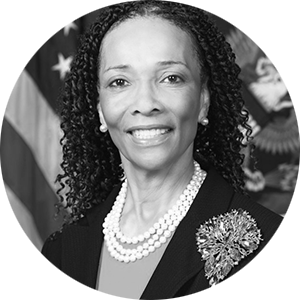
Cynthia Snyder
Assistant Director of National Intelligence for Human CapitalOffice of the Director of National Intelligence

Heather Kuldell-Ware
Former Editor-in-ChiefGovExec
Defending against sophisticated attacks from hackers utilizing generative AI and other advanced technologies requires a highly capable workforce. Developing this workforce starts with comprehensive education and training programs that provide professionals with a deep understanding of the latest cybersecurity principles, technologies, and best practices. To address the growing skills gap, partnerships and collaborations between government agencies, private sector stakeholders, and educational institutions are essential. These collaborative efforts help to create pathways for talent development, ensuring a continuous supply of skilled individuals ready to tackle emerging threats.
In this discussion, experts will share how their organizations are advancing towards building a more diverse, skilled, and innovative cyber workforce. They will share strategies for targeted recruitment, ongoing training initiatives, and collaborative efforts that contribute to a stronger cybersecurity community capable of meeting the challenges of an evolving threat landscape.

Maj. General William Bowers
Commanding GeneralUSMC Recruiting Command

Brynt Parmeter
Chief Talent Management OfficerDepartment of Defense

Cynthia Snyder
Assistant Director of National Intelligence for Human CapitalOffice of the Director of National Intelligence

Heather Kuldell-Ware
Former Editor-in-ChiefGovExec
Underwriter

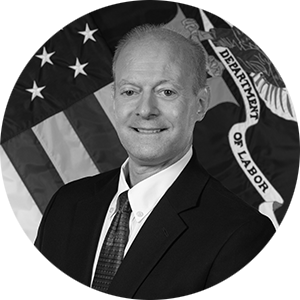
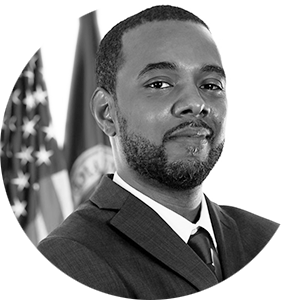
As cyber threats gain momentum and become more sophisticated, security, efficiency, and accuracy become more imperative. The session will explore organizations' unique challenges faced as they minimize security vulnerabilities and increase speed while strengthening their data governance and privacy. Attendees will hear how AI-driven solutions are preventing future attacks, mitigating data, and improving agency resiliency and agility. This session will also discuss how cyber defense strategies are advancing in hybrid cloud environments with the adoption of new technologies.
As cyber threats gain momentum and become more sophisticated, security, efficiency, and accuracy become more imperative. The session will explore organizations' unique challenges faced as they minimize security vulnerabilities and increase speed while strengthening their data governance and privacy. Attendees will hear how AI-driven solutions are preventing future attacks, mitigating data, and improving agency resiliency and agility. This session will also discuss how cyber defense strategies are advancing in hybrid cloud environments with the adoption of new technologies.

Paul Blahusch
Chief Information Security OfficerDepartment of Labor

James Saunders
Chief Information Security OfficerOffice of Personnel Management

Dirk Wiker
Cyber Security Solutions Architect within Federal Strategic ProgramsDell

Rachel Allen
Engineering Manager for Cybersecurity AINVIDIA

George Jackson
Executive ProducerGovExec
As cyber threats gain momentum and become more sophisticated, security, efficiency, and accuracy become more imperative. The session will explore organizations' unique challenges faced as they minimize security vulnerabilities and increase speed while strengthening their data governance and privacy. Attendees will hear how AI-driven solutions are preventing future attacks, mitigating data, and improving agency resiliency and agility. This session will also discuss how cyber defense strategies are advancing in hybrid cloud environments with the adoption of new technologies.

Paul Blahusch
Chief Information Security OfficerDepartment of Labor

James Saunders
Chief Information Security OfficerOffice of Personnel Management

Dirk Wiker
Cyber Security Solutions Architect within Federal Strategic ProgramsDell

Rachel Allen
Engineering Manager for Cybersecurity AINVIDIA

George Jackson
Executive ProducerGovExec

Join us for an engaging discussion on the pivotal role of the Office of the National Cyber Director (ONCD) in shaping the federal cybersecurity landscape. This session will explore how ONCD is guiding agencies to better understand and navigate its mission, fostering cohesion across the federal cyber ecosystem. We'll also tackle long-term challenges and complex issues facing the cyber domain, examining the critical steps needed to drive progress and resilience in the years to come.
Join us for an engaging discussion on the pivotal role of the Office of the National Cyber Director (ONCD) in shaping the federal cybersecurity landscape. This session will explore how ONCD is guiding agencies to better understand and navigate its mission, fostering cohesion across the federal cyber ecosystem. We'll also tackle long-term challenges and complex issues facing the cyber domain, examining the critical steps needed to drive progress and resilience in the years to come.
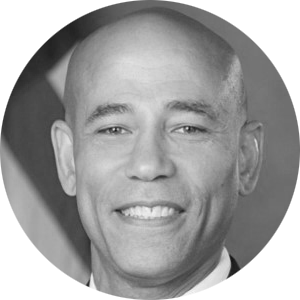
Harry Wingo
Deputy National Cyber DirectorThe White House
Join us for an engaging discussion on the pivotal role of the Office of the National Cyber Director (ONCD) in shaping the federal cybersecurity landscape. This session will explore how ONCD is guiding agencies to better understand and navigate its mission, fostering cohesion across the federal cyber ecosystem. We'll also tackle long-term challenges and complex issues facing the cyber domain, examining the critical steps needed to drive progress and resilience in the years to come.

Harry Wingo
Deputy National Cyber DirectorThe White House
Grab some lunch and visit our partner exhibits during this break
Grab some lunch and visit our partner exhibits during this break
Grab some lunch and visit our partner exhibits during this break
Sit in on our breakout sessions during the GovExec Cybersecurity Futures Forum
Sit in on our breakout sessions during the GovExec Cybersecurity Futures Forum
Sit in on our breakout sessions during the GovExec Cybersecurity Futures Forum
Nextgov/FCW Breakout Track
Times are subject to change.
In today’s evolving threat landscape, Endpoint Detection and Response (EDR) is crucial for combating sophisticated cyber threats. By leveraging advanced threat intelligence and proactive threat hunting, agencies can swiftly detect and respond to potential breaches, mitigating risks before they escalate.
This session will focus on the critical role EDR plays in government cybersecurity, highlighting its impact on threat detection, intelligence, and data analysis. Participants will explore how EDR helps agencies uncover and respond to cyber risks, strengthening defenses against adversarial attacks and boosting overall resilience.
In today’s evolving threat landscape, Endpoint Detection and Response (EDR) is crucial for combating sophisticated cyber threats. By leveraging advanced threat intelligence and proactive threat hunting, agencies can swiftly detect and respond to potential breaches, mitigating risks before they escalate.
This session will focus on the critical role EDR plays in government cybersecurity, highlighting its impact on threat detection, intelligence, and data analysis. Participants will explore how EDR helps agencies uncover and respond to cyber risks, strengthening defenses against adversarial attacks and boosting overall resilience.

Roman Kulbashny
Security Engineering and Architecture Branch Chief, Office of the Chief Information OfficerDepartment of Education

Amanda Day
Acting Director, Enterprise Cybersecurity AssessmentsDepartment of Homeland Security

David DiMolfetta
Cybersecurity ReporterNextgov/FCW
In today’s evolving threat landscape, Endpoint Detection and Response (EDR) is crucial for combating sophisticated cyber threats. By leveraging advanced threat intelligence and proactive threat hunting, agencies can swiftly detect and respond to potential breaches, mitigating risks before they escalate.
This session will focus on the critical role EDR plays in government cybersecurity, highlighting its impact on threat detection, intelligence, and data analysis. Participants will explore how EDR helps agencies uncover and respond to cyber risks, strengthening defenses against adversarial attacks and boosting overall resilience.

Roman Kulbashny
Security Engineering and Architecture Branch Chief, Office of the Chief Information OfficerDepartment of Education

Amanda Day
Acting Director, Enterprise Cybersecurity AssessmentsDepartment of Homeland Security

David DiMolfetta
Cybersecurity ReporterNextgov/FCW
Maintaining data privacy and protection is essential for compliance and preserving user trust. Safeguarding sensitive information from breaches is a top priority, as secure data strengthens cyber resiliency throughout detection and response efforts. Strong protection measures are crucial for upholding data integrity at all levels.
In this session, IT leaders will explore the role of data protection in defending against breaches and enhancing cyber resiliency. Discussions will focus on securing sensitive information, ensuring regulatory compliance, and strengthening an organization's ability to recover from major cyber incidents.
Maintaining data privacy and protection is essential for compliance and preserving user trust. Safeguarding sensitive information from breaches is a top priority, as secure data strengthens cyber resiliency throughout detection and response efforts. Strong protection measures are crucial for upholding data integrity at all levels.
In this session, IT leaders will explore the role of data protection in defending against breaches and enhancing cyber resiliency. Discussions will focus on securing sensitive information, ensuring regulatory compliance, and strengthening an organization's ability to recover from major cyber incidents.

Gerald Caron
Former CIO, ITC; VP of CybersecurityRIVA Solutions Inc.

Natalie Alms
Staff ReporterNextgov/FCW
Maintaining data privacy and protection is essential for compliance and preserving user trust. Safeguarding sensitive information from breaches is a top priority, as secure data strengthens cyber resiliency throughout detection and response efforts. Strong protection measures are crucial for upholding data integrity at all levels.
In this session, IT leaders will explore the role of data protection in defending against breaches and enhancing cyber resiliency. Discussions will focus on securing sensitive information, ensuring regulatory compliance, and strengthening an organization's ability to recover from major cyber incidents.

Gerald Caron
Former CIO, ITC; VP of CybersecurityRIVA Solutions Inc.

Natalie Alms
Staff ReporterNextgov/FCW
Supply chain security further complements efforts to address vulnerabilities within complex global networks. Agencies must vigilantly assess and mitigate risks associated with third-party vendors and partners to prevent adversaries from exploiting these weaknesses. A secure supply chain is essential for protecting the integrity of operations and safeguarding data.
During this conversation agency leaders will explore challenges faced, best practices, and approaches to risk management in their supply chain security strategies. Leaders will also explore the imperative nature of supply chain security strategies for business operations and data security.
Supply chain security further complements efforts to address vulnerabilities within complex global networks. Agencies must vigilantly assess and mitigate risks associated with third-party vendors and partners to prevent adversaries from exploiting these weaknesses. A secure supply chain is essential for protecting the integrity of operations and safeguarding data.
During this conversation agency leaders will explore challenges faced, best practices, and approaches to risk management in their supply chain security strategies. Leaders will also explore the imperative nature of supply chain security strategies for business operations and data security.

Kelley Artz
Supply Chain Risk Management (SCRM) Technical ExpertOffice of Policy and Compliance, Federal Acquisition Service, General Services Administration

Edward Graham
Technology ReporterNextgov/FCW
Supply chain security further complements efforts to address vulnerabilities within complex global networks. Agencies must vigilantly assess and mitigate risks associated with third-party vendors and partners to prevent adversaries from exploiting these weaknesses. A secure supply chain is essential for protecting the integrity of operations and safeguarding data.
During this conversation agency leaders will explore challenges faced, best practices, and approaches to risk management in their supply chain security strategies. Leaders will also explore the imperative nature of supply chain security strategies for business operations and data security.

Kelley Artz
Supply Chain Risk Management (SCRM) Technical ExpertOffice of Policy and Compliance, Federal Acquisition Service, General Services Administration

Edward Graham
Technology ReporterNextgov/FCW
Hear a case study from our partners at The GovExec Cybersecurity Futures Forum
Hear a case study from our partners at The GovExec Cybersecurity Futures Forum
Hear a case study from our partners at The GovExec Cybersecurity Futures Forum
Defense One Breakout Track
Times are subject to change.
Advanced Persistent Threats (APTs) are stealthy attacks designed to infiltrate networks and remain undetected for long periods of time. To combat APTs effectively, agencies must continuously improve their detection and response strategies with a focus on early identification and rapid action. This includes implementing layered security measures, advanced analytics, and vigilant monitoring.
In this session, agency leaders will explore how their organizations are enhancing early detection and response to APTs by adopting emerging technologies like AI-driven analytics and advanced threat intelligence.
Advanced Persistent Threats (APTs) are stealthy attacks designed to infiltrate networks and remain undetected for long periods of time. To combat APTs effectively, agencies must continuously improve their detection and response strategies with a focus on early identification and rapid action. This includes implementing layered security measures, advanced analytics, and vigilant monitoring.
In this session, agency leaders will explore how their organizations are enhancing early detection and response to APTs by adopting emerging technologies like AI-driven analytics and advanced threat intelligence.

Derrick Davis
Director Industrial Cyber Security for the Office of Small Business Programs (OSBP)Department of Defense

Lauren Williams
ReporterDefense One
Advanced Persistent Threats (APTs) are stealthy attacks designed to infiltrate networks and remain undetected for long periods of time. To combat APTs effectively, agencies must continuously improve their detection and response strategies with a focus on early identification and rapid action. This includes implementing layered security measures, advanced analytics, and vigilant monitoring.
In this session, agency leaders will explore how their organizations are enhancing early detection and response to APTs by adopting emerging technologies like AI-driven analytics and advanced threat intelligence.

Derrick Davis
Director Industrial Cyber Security for the Office of Small Business Programs (OSBP)Department of Defense

Lauren Williams
ReporterDefense One
Quantum computing promises to revolutionize cybersecurity by offering unparalleled computational power. Agencies are exploring quantum technologies to advance their cyber strategies, particularly in encryption and cryptography. By integrating quantum computing, organizations can stay ahead of emerging threats and enhance their defenses against future adversaries.
In this session, agency leaders will explore the power of quantum computation and technology integration, including how they are advancing their organizational encryption and cryptography capabilities and improving their defense against adversaries.
Quantum computing promises to revolutionize cybersecurity by offering unparalleled computational power. Agencies are exploring quantum technologies to advance their cyber strategies, particularly in encryption and cryptography. By integrating quantum computing, organizations can stay ahead of emerging threats and enhance their defenses against future adversaries.
In this session, agency leaders will explore the power of quantum computation and technology integration, including how they are advancing their organizational encryption and cryptography capabilities and improving their defense against adversaries.

Dr. Celia Merzbacher
Executive DirectorQuantum Economic Development Consortium (QED-C)

Patrick Tucker
Science and Technology EditorDefense One
Quantum computing promises to revolutionize cybersecurity by offering unparalleled computational power. Agencies are exploring quantum technologies to advance their cyber strategies, particularly in encryption and cryptography. By integrating quantum computing, organizations can stay ahead of emerging threats and enhance their defenses against future adversaries.
In this session, agency leaders will explore the power of quantum computation and technology integration, including how they are advancing their organizational encryption and cryptography capabilities and improving their defense against adversaries.

Dr. Celia Merzbacher
Executive DirectorQuantum Economic Development Consortium (QED-C)

Patrick Tucker
Science and Technology EditorDefense One
Effective integration of real-time threat intelligence is crucial for bolstering cybersecurity defenses. By using current data on adversarial tactics and attack vectors, agencies can enhance their threat mitigation strategies and improve response times. This approach demands ongoing monitoring, comprehensive data analysis, and strong interdepartmental collaboration to ensure that the latest intelligence drives cyber defense efforts.
In this session, agency leaders will discuss how organizations are using real-time threat intelligence and data analysis across government departments to prevent adversarial attacks and address emerging threats.
Effective integration of real-time threat intelligence is crucial for bolstering cybersecurity defenses. By using current data on adversarial tactics and attack vectors, agencies can enhance their threat mitigation strategies and improve response times. This approach demands ongoing monitoring, comprehensive data analysis, and strong interdepartmental collaboration to ensure that the latest intelligence drives cyber defense efforts.
In this session, agency leaders will discuss how organizations are using real-time threat intelligence and data analysis across government departments to prevent adversarial attacks and address emerging threats.
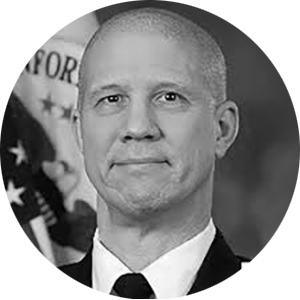
Colonel Richard Leach
Director of IntelligenceDISA
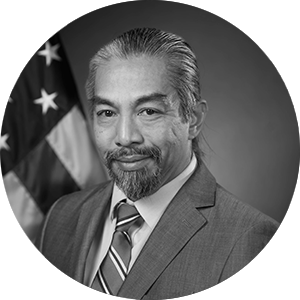
Lam Nguyen
Chief Scientist, Cyber Crime CenterDepartment of Defense

Lauren Williams
ReporterDefense One
Effective integration of real-time threat intelligence is crucial for bolstering cybersecurity defenses. By using current data on adversarial tactics and attack vectors, agencies can enhance their threat mitigation strategies and improve response times. This approach demands ongoing monitoring, comprehensive data analysis, and strong interdepartmental collaboration to ensure that the latest intelligence drives cyber defense efforts.
In this session, agency leaders will discuss how organizations are using real-time threat intelligence and data analysis across government departments to prevent adversarial attacks and address emerging threats.

Colonel Richard Leach
Director of IntelligenceDISA

Lam Nguyen
Chief Scientist, Cyber Crime CenterDepartment of Defense

Lauren Williams
ReporterDefense One
Discover how modernizing and transforming the SOC utilizing AI/ML can lower risk, lower MTTD & MTTR, and increase efficiency. Understand how re-thinking the legacy SOC paradigm has brought a breakthrough to processing 100% of alerts and moving analysts from a reactive to a proactive posture. This posture change brings along the added benefits of minimizing resource churn and continuous improvement. Integration of Palo Alto's Cortex technologies in XSIAM provides a single Autonomous SOC platform that handles the growing needs of enterprise and cloud infrastructures of today and in the future.
Discover how modernizing and transforming the SOC utilizing AI/ML can lower risk, lower MTTD & MTTR, and increase efficiency. Understand how re-thinking the legacy SOC paradigm has brought a breakthrough to processing 100% of alerts and moving analysts from a reactive to a proactive posture. This posture change brings along the added benefits of minimizing resource churn and continuous improvement. Integration of Palo Alto's Cortex technologies in XSIAM provides a single Autonomous SOC platform that handles the growing needs of enterprise and cloud infrastructures of today and in the future.

Joel Velasquez
Cortex Domain ConsultantPalo Alto Networks
Discover how modernizing and transforming the SOC utilizing AI/ML can lower risk, lower MTTD & MTTR, and increase efficiency. Understand how re-thinking the legacy SOC paradigm has brought a breakthrough to processing 100% of alerts and moving analysts from a reactive to a proactive posture. This posture change brings along the added benefits of minimizing resource churn and continuous improvement. Integration of Palo Alto's Cortex technologies in XSIAM provides a single Autonomous SOC platform that handles the growing needs of enterprise and cloud infrastructures of today and in the future.

Joel Velasquez
Cortex Domain ConsultantPalo Alto Networks
Washington Technology Breakout Track
Times are subject to change.
Protecting the Defense Industrial Base (DiB) from advanced and evolving threats is a critical national security priority. In 2024, the DiB faces sophisticated cyber attacks, insider threats, and supply chain vulnerabilities. To address these challenges, implementing adaptive defense strategies is crucial. This involves proactive risk assessment, compliance with evolving cybersecurity regulations, and adopting cutting-edge security measures to protect critical infrastructure.
In this session, agency leaders will delve into how adaptive strategies and cutting-edge security measures are crucial for protecting the Defense Industrial Base (DiB) from increasingly sophisticated threats and supply chain vulnerabilities. Gain insights into the latest advancements and best practices that are shaping the future of defense cybersecurity.
Protecting the Defense Industrial Base (DiB) from advanced and evolving threats is a critical national security priority. In 2024, the DiB faces sophisticated cyber attacks, insider threats, and supply chain vulnerabilities. To address these challenges, implementing adaptive defense strategies is crucial. This involves proactive risk assessment, compliance with evolving cybersecurity regulations, and adopting cutting-edge security measures to protect critical infrastructure.
In this session, agency leaders will delve into how adaptive strategies and cutting-edge security measures are crucial for protecting the Defense Industrial Base (DiB) from increasingly sophisticated threats and supply chain vulnerabilities. Gain insights into the latest advancements and best practices that are shaping the future of defense cybersecurity.

Bailey Bickley
Chief of DiB DefenseNational Security Agency
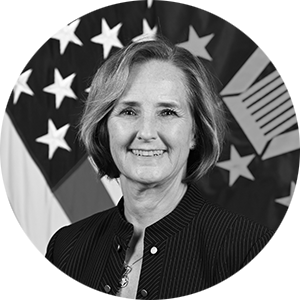
Stacy Bostjanick
Chief, DIB CybersecurityDOD, OCIO

Nick Wakeman
Editor-in-ChiefWashington Technology
Protecting the Defense Industrial Base (DiB) from advanced and evolving threats is a critical national security priority. In 2024, the DiB faces sophisticated cyber attacks, insider threats, and supply chain vulnerabilities. To address these challenges, implementing adaptive defense strategies is crucial. This involves proactive risk assessment, compliance with evolving cybersecurity regulations, and adopting cutting-edge security measures to protect critical infrastructure.
In this session, agency leaders will delve into how adaptive strategies and cutting-edge security measures are crucial for protecting the Defense Industrial Base (DiB) from increasingly sophisticated threats and supply chain vulnerabilities. Gain insights into the latest advancements and best practices that are shaping the future of defense cybersecurity.

Bailey Bickley
Chief of DiB DefenseNational Security Agency

Stacy Bostjanick
Chief, DIB CybersecurityDOD, OCIO

Nick Wakeman
Editor-in-ChiefWashington Technology
As cyber threats become increasingly complex, innovation in government contracting and acquisition processes is crucial. Reforming acquisition strategies aims to enhance security measures within procurement, ensuring that new technologies and solutions are integrated into the DiB efficiently and securely. Streamlined contracting processes accelerate the deployment of advanced cybersecurity technologies, enabling government and industry to respond more effectively to emerging threats.
During this conversation, agency leaders will discuss integrating innovation, acquisition strategies, and solutions to respond to unpredictable threats. Leaders will share how new technologies secure, streamline, and accelerate government contracting and procurement processes.
As cyber threats become increasingly complex, innovation in government contracting and acquisition processes is crucial. Reforming acquisition strategies aims to enhance security measures within procurement, ensuring that new technologies and solutions are integrated into the DiB efficiently and securely. Streamlined contracting processes accelerate the deployment of advanced cybersecurity technologies, enabling government and industry to respond more effectively to emerging threats.
During this conversation, agency leaders will discuss integrating innovation, acquisition strategies, and solutions to respond to unpredictable threats. Leaders will share how new technologies secure, streamline, and accelerate government contracting and procurement processes.

Derrick Davis
Director Industrial Cyber Security for the Office of Small Business Programs (OSBP)Department of Defense

Nick Wakeman
Editor-in-ChiefWashington Technology
As cyber threats become increasingly complex, innovation in government contracting and acquisition processes is crucial. Reforming acquisition strategies aims to enhance security measures within procurement, ensuring that new technologies and solutions are integrated into the DiB efficiently and securely. Streamlined contracting processes accelerate the deployment of advanced cybersecurity technologies, enabling government and industry to respond more effectively to emerging threats.
During this conversation, agency leaders will discuss integrating innovation, acquisition strategies, and solutions to respond to unpredictable threats. Leaders will share how new technologies secure, streamline, and accelerate government contracting and procurement processes.

Derrick Davis
Director Industrial Cyber Security for the Office of Small Business Programs (OSBP)Department of Defense

Nick Wakeman
Editor-in-ChiefWashington Technology
Strengthening cybersecurity defenses relies heavily on collaboration between government and industry, where effective partnerships involve intelligence sharing, resource pooling, and exchanging best practices. A critical component of this collaboration is integrating intelligence into the acquisition process, ensuring that cybersecurity tools and technologies are informed by the latest threat data and insights. By embedding intel early in acquisitions, agencies can proactively address vulnerabilities, select adaptable technologies, and stay ahead of emerging threats.
At this event, public sector leaders will showcase best practices and real-world case studies on how government agencies can enhance their cyber defenses and build resilience through effective interagency collaboration, intelligence-driven acquisition strategies, and strategic partnerships with industry experts. Attendees will gain insights into leveraging collective expertise to coordinate efforts more effectively and bolster the overall resilience of defense strategies against cyber threats. Public sector leaders will showcase best practices and real-world case studies on how government agencies can enhance their cyber defenses and build resilience through effective interagency collaboration and strategic partnerships with industry experts.
Strengthening cybersecurity defenses relies heavily on collaboration between government and industry, where effective partnerships involve intelligence sharing, resource pooling, and exchanging best practices. A critical component of this collaboration is integrating intelligence into the acquisition process, ensuring that cybersecurity tools and technologies are informed by the latest threat data and insights. By embedding intel early in acquisitions, agencies can proactively address vulnerabilities, select adaptable technologies, and stay ahead of emerging threats.
At this event, public sector leaders will showcase best practices and real-world case studies on how government agencies can enhance their cyber defenses and build resilience through effective interagency collaboration, intelligence-driven acquisition strategies, and strategic partnerships with industry experts. Attendees will gain insights into leveraging collective expertise to coordinate efforts more effectively and bolster the overall resilience of defense strategies against cyber threats. Public sector leaders will showcase best practices and real-world case studies on how government agencies can enhance their cyber defenses and build resilience through effective interagency collaboration and strategic partnerships with industry experts.

Vicki Michetti
Deputy CIO, Enterprise IT Policy GovernanceDepartment of Energy

Colonel Jeffrey R. Strauss
Military Deputy, ProgramsDISA

Ross Wilkers
ReporterWashington Technology
Strengthening cybersecurity defenses relies heavily on collaboration between government and industry, where effective partnerships involve intelligence sharing, resource pooling, and exchanging best practices. A critical component of this collaboration is integrating intelligence into the acquisition process, ensuring that cybersecurity tools and technologies are informed by the latest threat data and insights. By embedding intel early in acquisitions, agencies can proactively address vulnerabilities, select adaptable technologies, and stay ahead of emerging threats.
At this event, public sector leaders will showcase best practices and real-world case studies on how government agencies can enhance their cyber defenses and build resilience through effective interagency collaboration, intelligence-driven acquisition strategies, and strategic partnerships with industry experts. Attendees will gain insights into leveraging collective expertise to coordinate efforts more effectively and bolster the overall resilience of defense strategies against cyber threats. Public sector leaders will showcase best practices and real-world case studies on how government agencies can enhance their cyber defenses and build resilience through effective interagency collaboration and strategic partnerships with industry experts.

Vicki Michetti
Deputy CIO, Enterprise IT Policy GovernanceDepartment of Energy

Colonel Jeffrey R. Strauss
Military Deputy, ProgramsDISA

Ross Wilkers
ReporterWashington Technology
Hear a case study from our partners at The GovExec Cybersecurity Futures Forum
Hear a case study from our partners at The GovExec Cybersecurity Futures Forum
Hear a case study from our partners at The GovExec Cybersecurity Futures Forum



